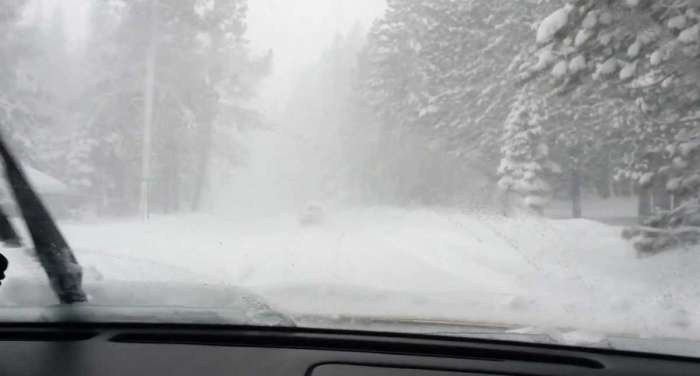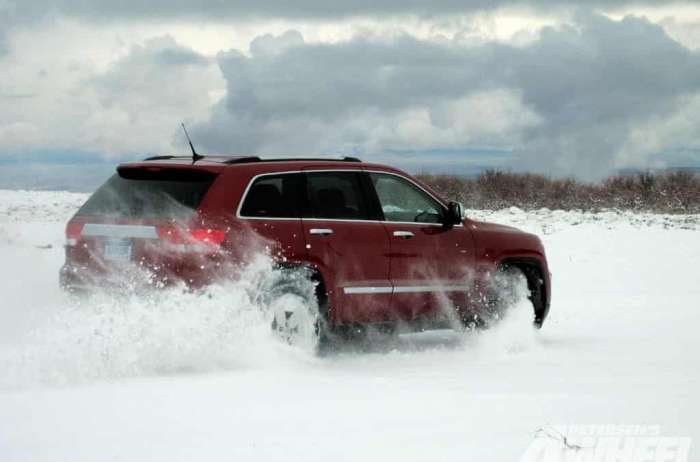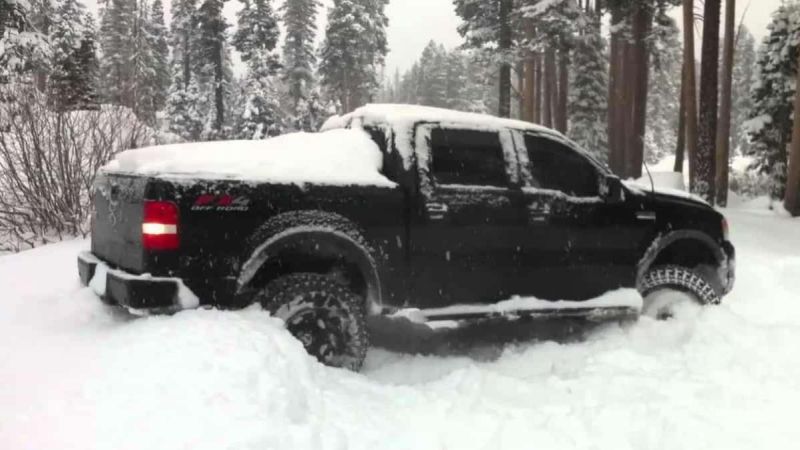While reading a piece by my colleague Denis Flierl's on Subaru and its improved all-wheel-drive, I was impressed by how much the addition of technology had improved its all-wheel-drive capability. Indeed, the changes gave specific Subaru models the ability to keep their wheels spinning in really grungy weather. You can read about my colleague Denis Flierl's story here.
Tech Solutions Aside, Winter Still A Problem
It's a situation that every automaker deals with every year as they try to make their products better. It seems that winter driving is one of the real problems for most drivers. But, here's the thing, no matter how much tech you apply to this problem, it has its roots in the same issue.
The base issue is getting moving in the snow. Now, many people believe that all-wheel-drive is for tooling along in the snow at speeds, well, shall we say, more than what common sense dictates. Here's an example from real-life:
Some years ago – we won't say how many – I was driving to my job in a city in northern Massachusetts. My dry-road commute was just about 40 minutes one-way, but when the weather turned lousy – as in snowy and icy – you could at least double the time behind the wheel.
So, there I am one winter morning on my commute north creeping along because the traction was miserable and the visibility was worse, and I looked up to see this big SUV moving along in the left-hand lane well over the speed limit.
Thinking to myself, this "guy will find himself in trouble very soon," I wasn't disappointed with the prediction. As I watched this driver whose abilities did not match his vehicle's capabilities, he was coming alongside me, and I saw his face. Suddenly, the cigarette which he kept jauntily placed between his fingers was jammed back into his mouth. There was also a look of horror spreading across his face. He suddenly realized his huge SUV was becoming a considerable land turkey as he was driving too fast.
Attack Angle Wrong And Away It Goes
I could see him trying to steer the SUV, but his attack angle was just too great, and he was in for it as there was no traction left in the rapidly turning wheels. Oh, he was spraying lots of snow and slush around as he turned the wheels, but his maneuvers were accomplishing very little but putting layers of snow and slush on the cars around him. He turned his wheels left, and he turned them right, but there was nothing he could do.
By now, gravity was starting to take over the whole show, and I could see the SUV beginning to lose the roadway's battle. Though it seemed like forever – it's one of those moments etched in my mind – the big SUV swung over the left, and down the embankment it went, barreling ahead more quickly. I thought it would easily hit either the stream in the middle of the wooded medium strip or one of the pines that littered the bottom. I could see the driver trying to control things with wild swings to the left and right, and I followed the track. Somehow, the driver righted the big SUV, and he drove on, ultimately reaching a curb cut and going on his way. That is not how to do it – every move in the snow requires deliberateness and thought. Sometimes, I guess blind panic wins out!
At one point, I thought light did dawn on that marble-head as the SUV (I think it was a large Ford) slowed appreciably, and the flailing from side to side stopped. It was as if he realized that all he had to do was slow down and stop oversteering, and he was in good shape. It took him a good two miles before he reached the curb cut to figure this out.

So, he managed to wrangle to big SUV back to his control, and he approached an area of the road where the berm was nearly flat, and the curb cut was there for emergency vehicles. I think you can guess what happened when the driver figured out the equivalent of the "Hey. I'm still alive" shout after a fall from a bridge. You can guess what happened next. That's right, he jumped back on the gas as soon as all four wheels were back on the Interstate, and he started forging ahead like a bat -out-of-a-warm-place, you were exactly right. Not more than a mile passed, and he was off and away at high speeds.
He never learned from his skidding or his vehicle's lack of traction. I am sure that the driver credited himself with an excellent maneuvering job, instead of a lucky array of lefts and rights and stark terror. I never did find out what happened to him ultimately because he was gone in a cloud of snow and slush and a hearty "Gulp," I think.
Facts Of All-Wheel-Drive And Snow
Still, the episode does illustrate how you should approach driving in the snow and slush. Now it is true that Subaru's improvements to its drive are excellent, but you can't get around two facts:
- All-wheel-drive capability is useful in the snow, but not for steamrolling ahead.
- All-wheel-drive capability helps get your vehicle rolling and keeping it rolling in the snow.

So, how did the salesperson get you into your Rolls-Kinardly Special, just in time for the next snowstorm? After reading the preceding, you know that all-wheel-drive has a unique place.
True, it does seem a tremendous let-down to find out that your Rolls-Kinardly Special AWD won't allow you to do everything in the snow or slush, except pirouette. You do have to give the salesperson credit, though, because he probably made it seem like it could, especially after he gave you that special test drive in a snowy field.
Okay, so now you know that the 15 minutes of driving around that field were a special event, and they were because the salesperson knew the field well and often used it for sales demos. This enabled the salesperson to direct you on the best lines to take and the best speeds to drive.
One thing you probably noticed was that the Rolls-Kindardly wasn't traveling at high speeds. Unlike the TV commercials for vehicles of the same name – usually driven by professionals and with disclaimers at the end – your test drive was at very likely about 25 mph, or maybe 30, tops. And it was a very straight line.
A Special Test Drive For You?
You probably noticed that the salesperson had you stop the vehicle and start it and that he remarked on it several times and had you remark on it more than once. He likely had you agree that it was great for getting going in the snow while implying that you could drive quickly once you were underway, though the demo vehicle never was driven too quickly.
With that demo done, though, he had you hooked, and he probably answered your questions about traveling at high speed and mileage figures and the like quickly, leaving you to figure things out. Of, if he did say anything about it, he probably said, "Sure, you can drive at different speeds, once you are moving." It's an answer that's less than an answer, but it sure sounds good.
Okay, so what do we know now about AWD? It's good to get you going in the snow and to keep you rolling at reasonable speeds up to 30 or 35 mph. That is the truth of AWD. It is best to get your vehicle out of trouble and to let you stay safe on your way.
It's not for high-speed driving or driving as if you don't have a care in the world.
Marc Stern has been an auto writer since 1971. It was a position that filled two boyhood dreams: One that I would write, and two that I write about cars. When I took over as my newspaper's auto editor, I began a 32-year career as an automotive columnist. There isn't much on four wheels that I haven't driven or reviewed. My work has appeared in Popular Mechanics, Mechanix Illustrated, AutoWeek, SuperStock, Trailer Life, Old Cars Weekly, Special Interest Autos, etc. Today, I am the Ford F150 reporter for Torque News. I write how-to and help columns for online sites such as Fixya.com and others. You can follow me on Twitter or Facebook. Most of Marc's stories are part of Torque News Ford coverage. Check back again and search for Torque News Ford F-150 news for more F-150 truck news coverage.











